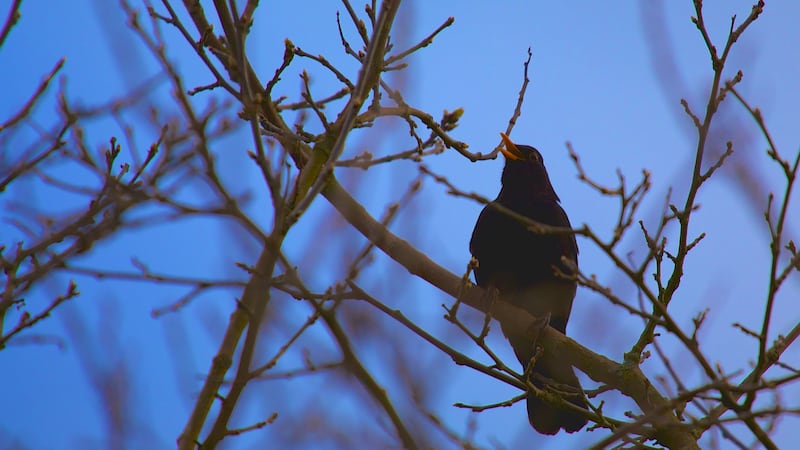ALTHOUGH we have passed the winter solstice by some margin, darkness still hangs on stubbornly through January and with it, for many, a feeling of interminable gloom.
Subtle behaviours in the natural world, however, reassure us that longer, brighter days are not far off. The first of these signs, a song thrush singing in the morning darkness, came to my attention before Christmas and has continued to delight with its repeated phrases ever since.
Its distinctive notes piercing through the dark remind me of the famous Beatles song Blackbird from their 1968 White Album. Sung as a solo by Paul McCartney, or Macca, as he is known to his legions of fans, the blackbird, a member of the thrush family, is heard ‘singing in the dead of night’ and is invited to ‘Take these broken wings and learn to fly’.
McCartney has often recalled how the song was written as a response to racial tensions escalating in the United States during the spring of 1968, with the words ‘You were only waiting for this moment to be free’, offered in hope that those suffering from discrimination and persecution would emerge from the darkness, with ‘broken wings’ healed.
The lyrics have drawn various interpretations but ultimately, they offer hope, reflecting how light will follow darkness.
The Blackbird, Turdus merula, described by Shakespeare as ‘The ousel-cock so black of hue/With orange-tawny bill', is at its best in spring when it effortlessly releases its slow, meditative song of warm, rich liquid notes, instantly recognisable, like those played by McCartney on his Martin D-28 acoustic guitar as he accompanies his song.
Welsh poet RS Thomas, in his poem A Blackbird Singing, writes,
'A slow singer, but loading each phrase
With history’s overtones, love, joy
And grief learned by his dark tribe’.
Common in gardens and hedgerows, the blackbird is also very noisy when disturbed by cats or other potential threats. Its incessant ‘chinking’ alerts other birds to the danger and even when roosting at dusk it can sometimes ‘chink’ for some time before finally settling.
Lon or éan dubh in Irish, the bird has featured greatly in Irish lore. Able to pass freely into the ‘otherworld’, or send a person into a trance through singing, the blackbird could also harbour souls in purgatory until judgment day.
The seventh century Saint Kevin, from Wicklow, is said to have allowed his outstretched hand be used as a nest for a family of blackbird chicks while praying during Lent. Out of respect for the bird he waited until the blackbird chicks had fledged.
References also suggest that blackbirds were used as a food source in Ireland and on the continent. In the Irish saga of The Cattle Raid of Cooley, Cúchulainn warns an opponent that if he annoys him any further, he will cut off his head, ‘as the head is cut off a blackbird'.
The old English nursery rhyme Sing a Song Of sixpence, with the words, ‘Four and twenty blackbirds/Baked in a pie,’ also points to their culinary use. Although the precise origin of the rhyme is unclear, it appears to have been written around the 17th/18th century and may even have links stretching back to the time of Henry II in the 12th century when live birds were placed in pies as a form of entertainment.
Just as Macca encourages the blackbird to fly, ‘Into the light of the dark black night’, it, along with thrush and other recent songsters on the local brae, are helping nudge spring ever closer, ‘waiting for this moment to arise’.








